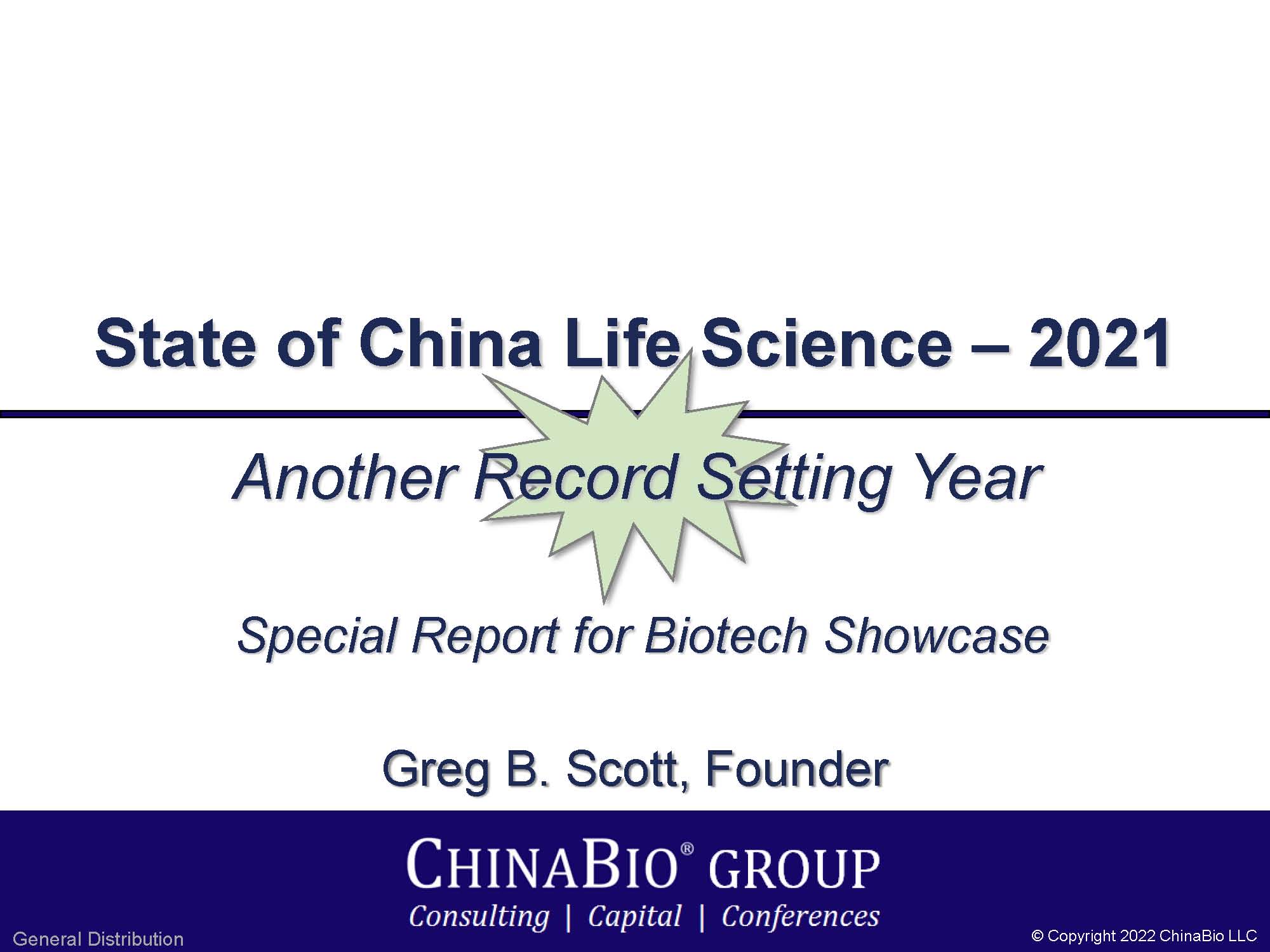Did you know?
ChinaBio® Group is a consulting and advisory firm helping life science companies and investors achieve success in China. ChinaBio works with U.S., European and APAC companies and investors seeking partnerships, acquisitions, novel technologies and funding in China.
Free Newsletter
Have the latest stories on China's life science industry delivered to your inbox daily or weekly - free!
Free Report
The Week in Review: TCM Drug Investigated as Neuroprotector
publication date: Jul 22, 2007
|
author/source: Richard Daverman, PhD
Investment Continues in Chinese Biotech
In China, huperzine A, derived from firmoss, has long been used to fight inflammation and fever. But the traditional Chinese medicine is now thought to have neuroprotective properties as well. It has done a very good job of preventing seizures in a rat model of epilepsy, and it also seems to prevent or slow the otherwise implacable progress of Alzheimer's disease. The compound inhibits the enzyme acetylcholinesterase, which is also the mechanism of action of several Alzheimer's disease treatments. However, huperzine A accomplishes the same results with fewer side effects. Trials are underway in China and the US to see how effective hyperzine A is for Alzheimer's, while the epilepsy trial is being conducted at Harvard University.
During the past week, we listed all the public life science enterprises whose major operations are in China, divided according to exchange (see story). They totaled 158 in number. Out goal is to shed some light on the range of Chinese biomedical companies already public. Along the same lines, we also provided a table of the top 20 life science companies in China ranked according to revenue and the top 10 producers of profits (same story as above), and we will provide profiles of some of these companies in the weeks to come.
Also during the week, Chinese biomedical companies attracted more investors, a continuing story. We have reported earlier on the much-increased sums that were both brought in and dispersed by venture capital and private equity firms (see story) during the second quarter of 2007, and we detailed in a story this week how much of those sums went to biomedical firms (see story). NovaMed closed on $5 million of venture capital (see story), and a Chinese National Fund earmarked 100 million RMB ($13.2 million) to help early-stage biomedical companies (see story). Zero2IPO put three biomedical companies on their Venture50 list, a ranking of the Chinese enterprises deemed most deserving of additional capital from investors (same story as previous).
In terms of progress on new products, China Medical Tech (Nasdaq: CMED) began a clinical trial in the US of its ultrasound device that treats cancers (see story). China Shenghuo (AMEX: KUN) completed the Phase II trial of an ulcer drug (see story); Sinobiomed (OTC BB: SOBM.OB) is nearing a launch in China of its treatment of ulceration, recombinant acidic Fibroblast Growth Factor (aFGF) (see story); and Beijing Med-Pharma (BJGP) signed a deal to distribute a generic version of an anti-nausea drug for chemotherapy patients (see story).
Disclosure: none
In China, huperzine A, derived from firmoss, has long been used to fight inflammation and fever. But the traditional Chinese medicine is now thought to have neuroprotective properties as well. It has done a very good job of preventing seizures in a rat model of epilepsy, and it also seems to prevent or slow the otherwise implacable progress of Alzheimer's disease. The compound inhibits the enzyme acetylcholinesterase, which is also the mechanism of action of several Alzheimer's disease treatments. However, huperzine A accomplishes the same results with fewer side effects. Trials are underway in China and the US to see how effective hyperzine A is for Alzheimer's, while the epilepsy trial is being conducted at Harvard University.
During the past week, we listed all the public life science enterprises whose major operations are in China, divided according to exchange (see story). They totaled 158 in number. Out goal is to shed some light on the range of Chinese biomedical companies already public. Along the same lines, we also provided a table of the top 20 life science companies in China ranked according to revenue and the top 10 producers of profits (same story as above), and we will provide profiles of some of these companies in the weeks to come.
Also during the week, Chinese biomedical companies attracted more investors, a continuing story. We have reported earlier on the much-increased sums that were both brought in and dispersed by venture capital and private equity firms (see story) during the second quarter of 2007, and we detailed in a story this week how much of those sums went to biomedical firms (see story). NovaMed closed on $5 million of venture capital (see story), and a Chinese National Fund earmarked 100 million RMB ($13.2 million) to help early-stage biomedical companies (see story). Zero2IPO put three biomedical companies on their Venture50 list, a ranking of the Chinese enterprises deemed most deserving of additional capital from investors (same story as previous).
In terms of progress on new products, China Medical Tech (Nasdaq: CMED) began a clinical trial in the US of its ultrasound device that treats cancers (see story). China Shenghuo (AMEX: KUN) completed the Phase II trial of an ulcer drug (see story); Sinobiomed (OTC BB: SOBM.OB) is nearing a launch in China of its treatment of ulceration, recombinant acidic Fibroblast Growth Factor (aFGF) (see story); and Beijing Med-Pharma (BJGP) signed a deal to distribute a generic version of an anti-nausea drug for chemotherapy patients (see story).
Disclosure: none
ChinaBio® News

Greg Scott Interviewed at BIO-Europe Spring
How to bring your China assets to China in 8 minutes

"Mr. Bio in China."
Mendelspod Interview
Multinational pharma held to a higher standard in China





